Do you want to have a vibrant and healthy lawn in Oklahoma? The key is choosing the right grass seed, and Bermuda grass is a fantastic option. But there are other options worth considering too, and we’ll explore them all in this article.
Oklahoma’s hot summers, harsh winters, and unpredictable weather can pose challenges for anyone trying to grow a healthy lawn. And when it comes to choosing the right grass seed, things can get overwhelming.
In this article, we’ll guide you through the best grass seed options for Oklahoma, so you can make an informed decision and enjoy a lush green yard all year round.
Bermudagrass
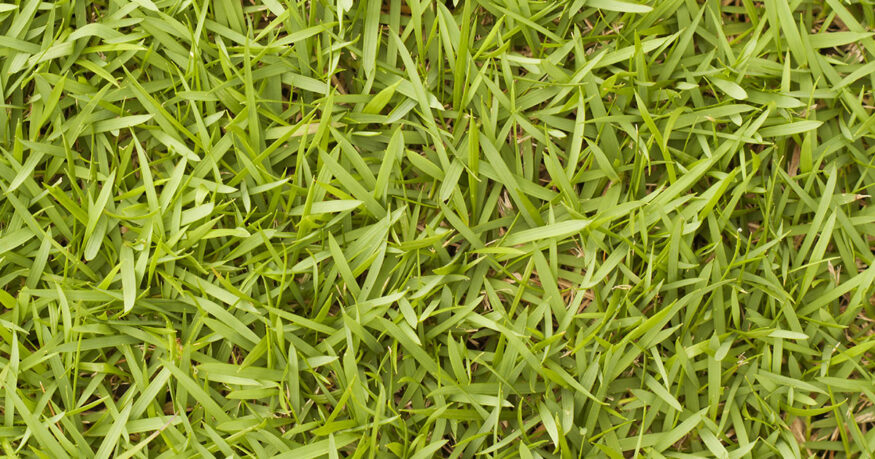
| Also Known As | Bermuda grass, wiregrass; Cynodon dactylon L. |
| Type of Grass | Warm season perennial |
| Optimal Zones | Southern region |
| Root Structure | Deep |
| Winter hardiness | Poor |
| Heat tolerance | Excellent |
| Shade tolerance | Poor |
| Water Requirements | High |
| Drought Tolerance | High |
| Self Repair Capacity | Excellent |
| Overall Maintenance Requirements | Moderate to High |
Why Bermudagrass is a good choice for Oklahoma
Looking for a grass seed that can withstand the Oklahoma heat and drought? Bermudagrass should be high on your list of choices!
This warm-season grass is the best choice for full-sun areas due to its excellent heat and drought tolerance during the summer and sufficient winter hardiness. It’s perfect for lawns, athletic fields, and golf courses because of its fine texture and high turf density.
With its aggressive above-ground and below-ground stems, this grass spreads quickly and forms a thick, dense turf that can tolerate low mowing height.
Bermudagrass is a great option for homeowners who have sunny yards with lots of foot traffic from kids, pets, or guests. Its extensive root system makes it resilient against environmental stresses, and allowing some thatch to develop will improve its appearance. However, it prefers full sun and will need regular watering and weekly or bi-weekly mowing and fertilization during the growing season.
If you’re thinking of planting Bermudagrass, the best seed planting dates are from May 15 to August 15. This grass has a deep green, dense color and a sharp, pointed 1/8-inch wide blade.
But be aware, it is susceptible to fungus in spring when the weather is wet and mild. Overall, Bermudagrass is the warm-season turfgrass species most commonly planted in Oklahoma due to its excellent heat and drought tolerance.
Perennial Ryegrass
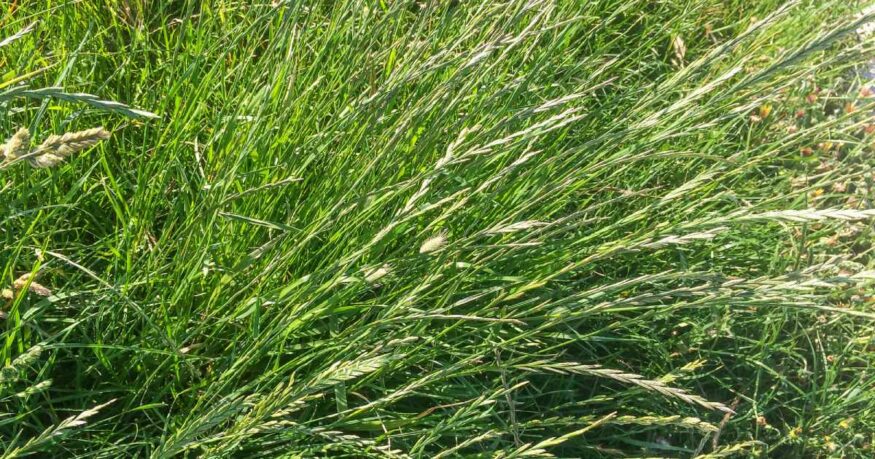
| Also Known As | Lolium perenne L. |
| Type of Grass | Cool season perennial |
| Optimal Zones | Mild northern zones |
| Root Structure | Deep |
| Winter hardiness | Good to excellent |
| Shade tolerance | Moderate |
| Water Requirements | High |
| Drought Tolerance | Good |
| Self Repair Capacity | Excellent wear tolerance |
| Overall Maintenance Requirements | Moderate to high |
Why Perennial Ryegrass is a good choice for Oklahoma
Perennial ryegrass is a cool-season grass is commonly seeded into an established bermudagrass turf when a fine-textured, green turf cover is desired from October through April. It’s also perfect for temporary soil stabilization during the fall and spring.
Perennial ryegrass is a fast-growing grass that can thrive when mixed with other species. Unlike warm-season grasses, it can handle shaded lawns. It’s highly drought-tolerant, but it will go dormant in the summer heat. With high foot traffic tolerance, low maintenance needs, and a mowing height of 1-2 inches, it’s an excellent choice for homeowners who want a hassle-free lawn.
But, like any grass, perennial ryegrass is susceptible to a few common grass diseases such as:
So, keep an eye out for these diseases and be sure to avoid the “Lynn” variety.
On the plus side, perennial ryegrass produces less thatch compared to other cool-season grasses.
So, if you’re looking for a grass that can keep your lawn green and healthy during the winter months, consider planting perennial ryegrass. It’s a great solution for Oklahoma’s challenging climate and soil conditions.
Tall Fescue
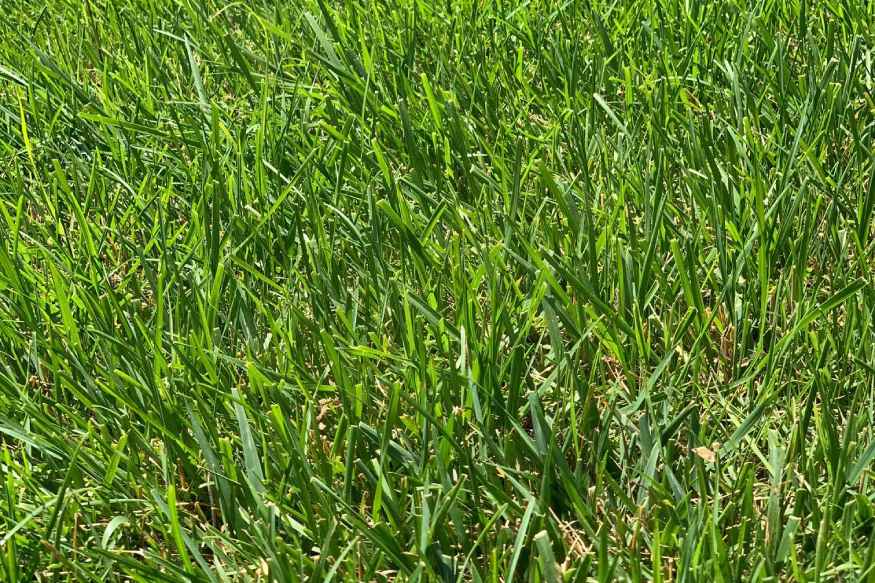
| Also Known As | Lolium arundinaceum (formerly Festuca arundinacea) |
| Type of Grass | Cool season perennial |
| Optimal Zones | Northern through transition zones |
| Root Structure | Deep |
| Winter hardiness | Excellent |
| Shade tolerance | High |
| Water Requirements | Medium to High |
| Drought Tolerance | Excellent |
| Self Repair Capacity | Limited |
| Overall Maintenance Requirements | Low |
Why Tall Fescue is a great choice for Oklahoma
If you’re looking for a resilient grass seed that can tolerate shade and retain its color during the winter months, then tall fescue is your best bet.
This cool-season grass is adaptable to a wide range of soil and climatic conditions, making it a popular choice for lawns in Oklahoma’s transition zone. It’s also heat-tolerant, making it the most successful cool-season grass in the state.
Tall fescue is a “bunch grass,” which allows it to germinate quickly and withstand heavy foot traffic. It’s perfect for shady areas, making it an excellent option for homeowners who have large trees or buildings blocking the sun. However, keep in mind that supplemental water is crucial for its long-term success, as it needs irrigation to remain green year-round and avoid summer dormancy.
This grass has pointed, visible veins and a 3/16-inch wide blade. Its color is dark green and has a coarse, stiff texture. It grows in clumps and requires frequent watering. If you’re thinking of planting tall fescue, the best seed planting dates are from March 15 to May 15 and September 15 to October 31.
In summary, tall fescue is a fantastic option for homeowners who want a year-round green lawn in Oklahoma’s transition zone. Its fantastic features, such as its heat tolerance and shade tolerance, make it a resilient seed that can survive in densely shaded sites that warm-season grasses cannot tolerate. So, be sure to consider planting tall fescue for a beautiful and healthy lawn.
Zoysia Grass
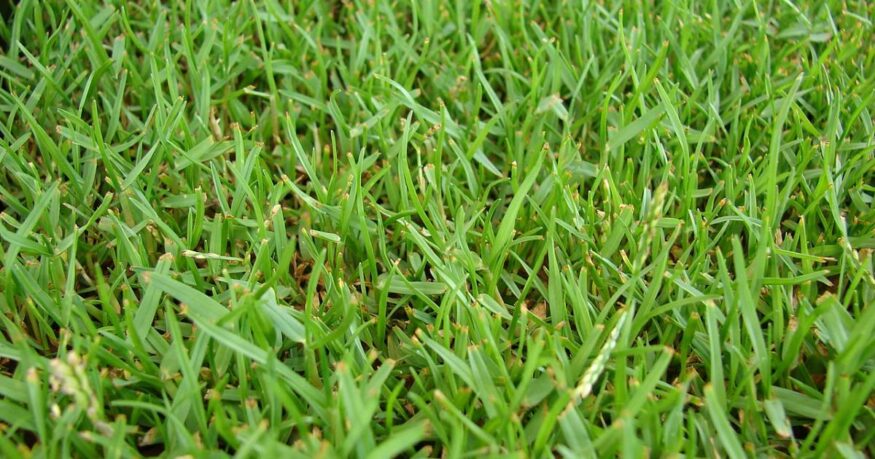
| Also Known As | Zoysiagrass; Zoysia sp. |
| Type of Grass | Warm season perennial |
| Optimal Zones | Southern through warmer transition zones |
| Root Structure | Shallow to medium |
| Winter hardiness | Good |
| Heat tolerance | Excellent |
| Shade tolerance | Partial |
| Water Requirements | Medium |
| Drought Tolerance | Good |
| Self Repair Capacity | Low |
| Overall Maintenance Requirements | Moderate |
Why Zoysia Grass is a good choice for Oklahoma
If you’re looking for a high-quality, high-maintenance turf grass, then zoysia grass is an excellent choice.
It’s a warm-season grass that spreads by below-ground rhizomes and above-ground stolons, making it dense and perfect for high foot traffic areas. Zoysia grass is moderate in shade tolerance, preferring full sun, but can handle light shade.
One of its most desirable features is its winter hardiness and ability to grow under light shade. But, its slow establishment rate is its greatest liability, so you’ll need to be patient when planting this grass. Zoysia grass requires more frequent watering to prevent wilting than bermudagrass, but has lower annual fertilizer requirements.
Zoysia grass is a fine to medium-textured turfgrass that feels like a thick, prickly carpet. It has narrow, needle-like blades and is stiff in texture. It’s slow-growing, which can take up to a year to establish a lawn. The best time to plant zoysia grass is from May 15 to August 15.
Zoysia grass is perfect for people who like to care for their lawn regularly and have time for dethatching. Its thick growth defends against invasive weeds, but it also produces a thatch buildup that requires aeration once a year or every other year. With moderate maintenance needs, it requires fertilizer and prefers frequent, small amounts instead of one large application. Its mowing height is 2-3 inches, and its foot traffic tolerance is high.
In summary, zoysia grass is a dense, warm-season grass that is fine to medium in texture. It’s perfect for homeowners who want a high-quality lawn but are willing to put in the work. Zoysia grass can handle heat, cold, drought, and heavy foot traffic, making it an excellent choice for lawns in Oklahoma.
Oklahoma’s Climate And Growing Challenges For Your Lawn
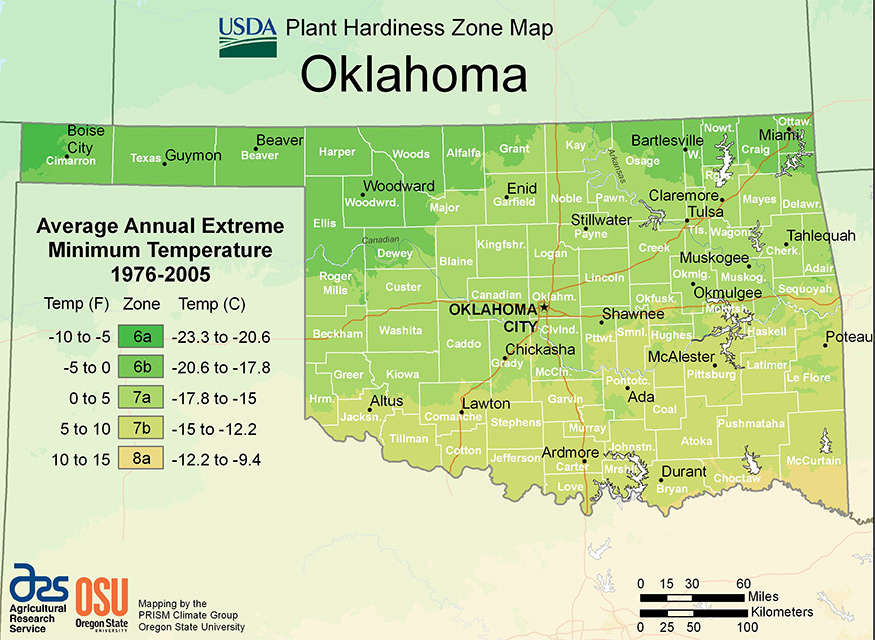
Oklahoma has a humid subtropical climate with hot summers and mild winters. This weather pattern brings about changes in the soil conditions that can be difficult for lawns to adapt to.
Weather Conditions
The summers in Oklahoma are hot, with temperatures often reaching over 90°F. During this time, it is crucial to water your lawn regularly as the heat can cause the grass to dry out quickly.
Oklahoma also experiences severe weather such as tornadoes and thunderstorms that can damage lawns.
Soil Conditions
Oklahoma’s soil is primarily made up of clay, which means it is dense and hard. This makes it difficult for water to penetrate the soil, leading to poor drainage and root development.
Additionally, the clay soil tends to become compacted easily, making it challenging for grass roots to grow deep into the ground.
Challenges
One of the significant challenges faced by lawn owners in Oklahoma is maintaining a healthy lawn all year round. Due to the extreme weather conditions experienced in Oklahoma, lawn care requires more attention than in other regions.
Another challenge is dealing with pests such as armyworms and chinch bugs that can cause significant damage if not dealt with promptly.
Oklahoma’s climate presents several growing challenges for lawns due to its extreme weather patterns and heavy clay soil composition. Lawn owners need to take extra precautions when caring for their yards throughout the year.